The Dutch Bushcraft Boys are Good at Designing Knives that Justify Their Name
This marks the third knife design from the Netherlands pair that has been keeping outdoor knife enthusiasts informed and entertained for years. It’s always a weird thing to review a knife designed by another knife reviewer, especially when that reviewer is infamously brutal with their testing, and are objectively more skilled in doing the tasks the knife was designed for.
The Maarten and Mikkie have, of course, already reviewed their own knife thoroughly, and it made a good show of itself. So it really feels like all I have to offer is conformation that what they say about their own knife is true, namely:
- It’s excellent at working with wood and making fires,
- It’s sharp and has great edge retention,
- It’s surprisingly resistant to chipping for the kind of grind and edge retention it has.
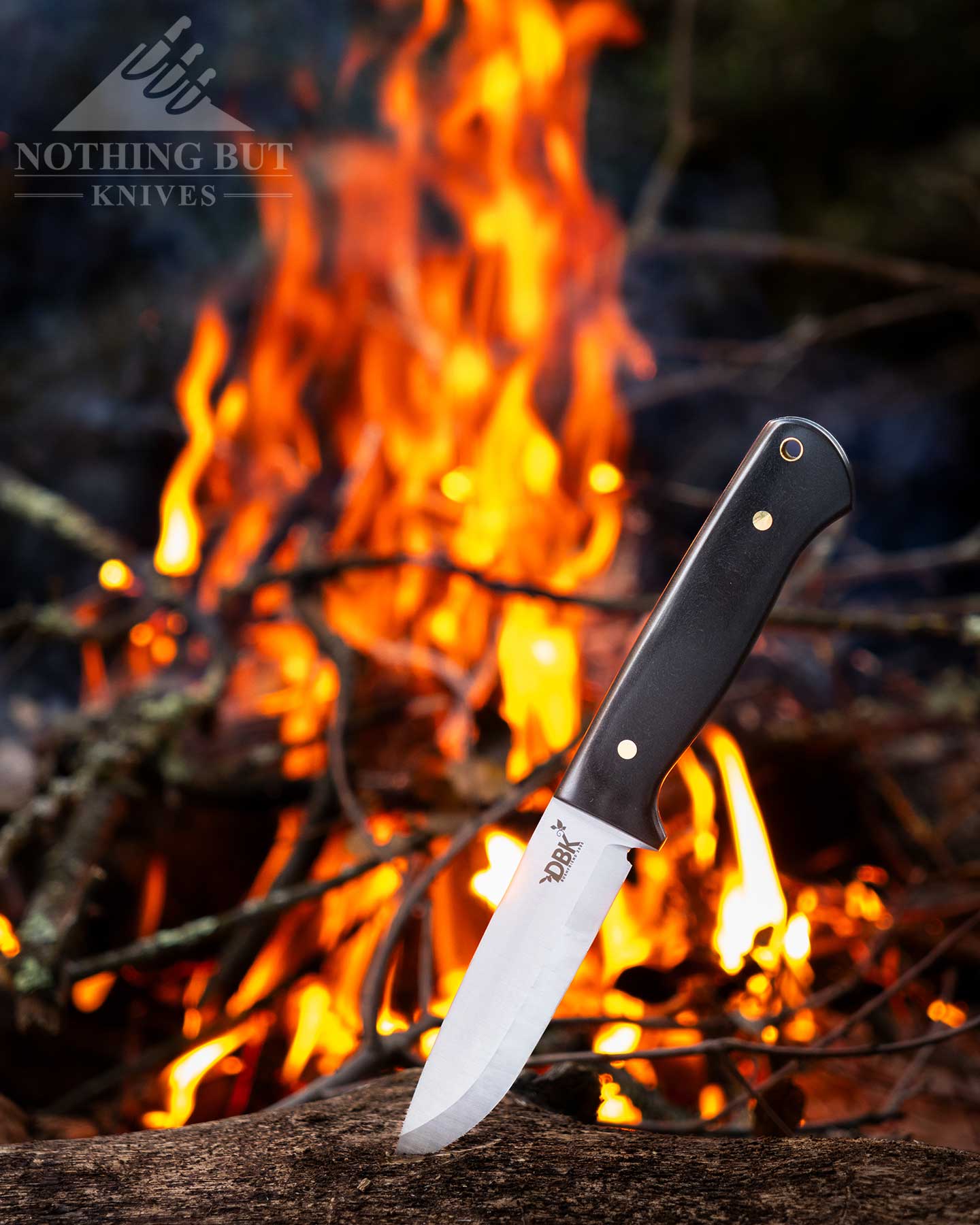
And, yeah. All of that is true. I’ll add that, while surprisingly resistant, it is still chippy (they neglected to do the “hitting rocks you didn’t realize were below the branch you were chopping” test, but I never forget that one), and I also have a few things to say about the handle being too smooth, and the price point this hits. But overall, this is a fantastic bushcraft knife.
We tested the scandi grind version for this review. The affiliate links below are for the flat grind version. We will add a link to the DBK Shop product page for the scandi grind version as soon as it is available again.
Specifications
| Overall Length: | 9.2” |
| Blade Length: | 4.5” (4.3” cutting edge) |
| Blade Steel: | 80CrV2 |
| Blade Thickness: | 3.5 mm (0.14”) |
| Blade Shape: | Drop point |
| Blade Grind: | Scandi |
| Handle Length: | 4.7” |
| Handle Material: | Richlite |
| Sheath: | Leather, drop-carry |
| Weight: | 168.4 g (5.94 oz) / 276 g (9.7 oz) w/ sheath |
| Designer: | DBK |
| Made in: | Solingen, Germany |
| What I Liked | What I Didn’t Like |
|---|---|
| A beast in all outdoor tasks | Handle is too smooth for me |
| Handle has lots of room and a comfortable shape | Not sure this counts as budget |
| Sharp edge that eats wood and holds up well | True scandi grinds are chippy (but that’s no surprise) |
| Throws Olympic levels of spark with ferro rods |
Is This Really a Budget Knife?


The main goal with the Bushfriend 2000 was to be a budget bushcraft knife, but it only fits that category if we’re saying anything under $150 is budget. For some people it is. It definitely is for two guys who mostly review knives no cheaper than 250 (no complaints about that from me. I love watching them abuse the hell out of knives that were designed for, but rarely actually see, heavy outdoor use).
But when I hear the word budget, I usually think in two-digit terms. Under 75, or even 50 (although that’s a harder mark to hit these days).
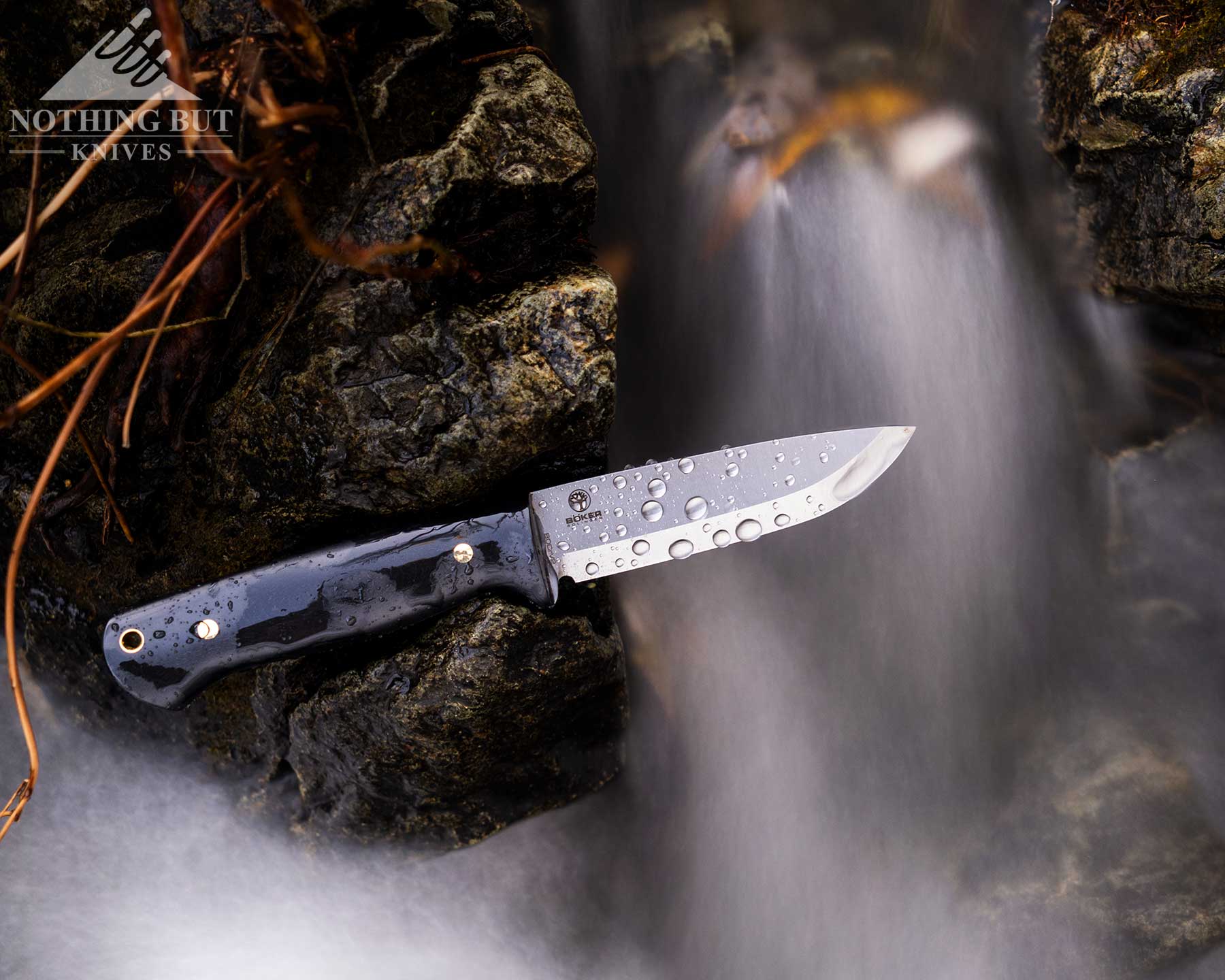
That was the rough benchmark for our budget EDC video; we just converted it into beers by dividing cans from the cost of a twelve pack. On that scale the Bushfriend 2000 rounds down to seven 12-packs, which, ironically, is a sobering visual.
That’s not all to say this absolutely isn’t a budget knife. It’s a good price for a nice, German-made knife, and it’s cheaper than most Falknivens or Bark Rivers or ESEEs, but it’s also more expenses than most Moraknivs, Gerbers, and a rapidly growing (and respectable) selection from companies like Kizer. In fact, they even made a great knife that was a lot more budget friendly called the BPS Bushmate. Taking all that in mind, I’m more inclined to call the Bushfriend 2000 mid-range more than budget.
Different Versions and Availability Issues
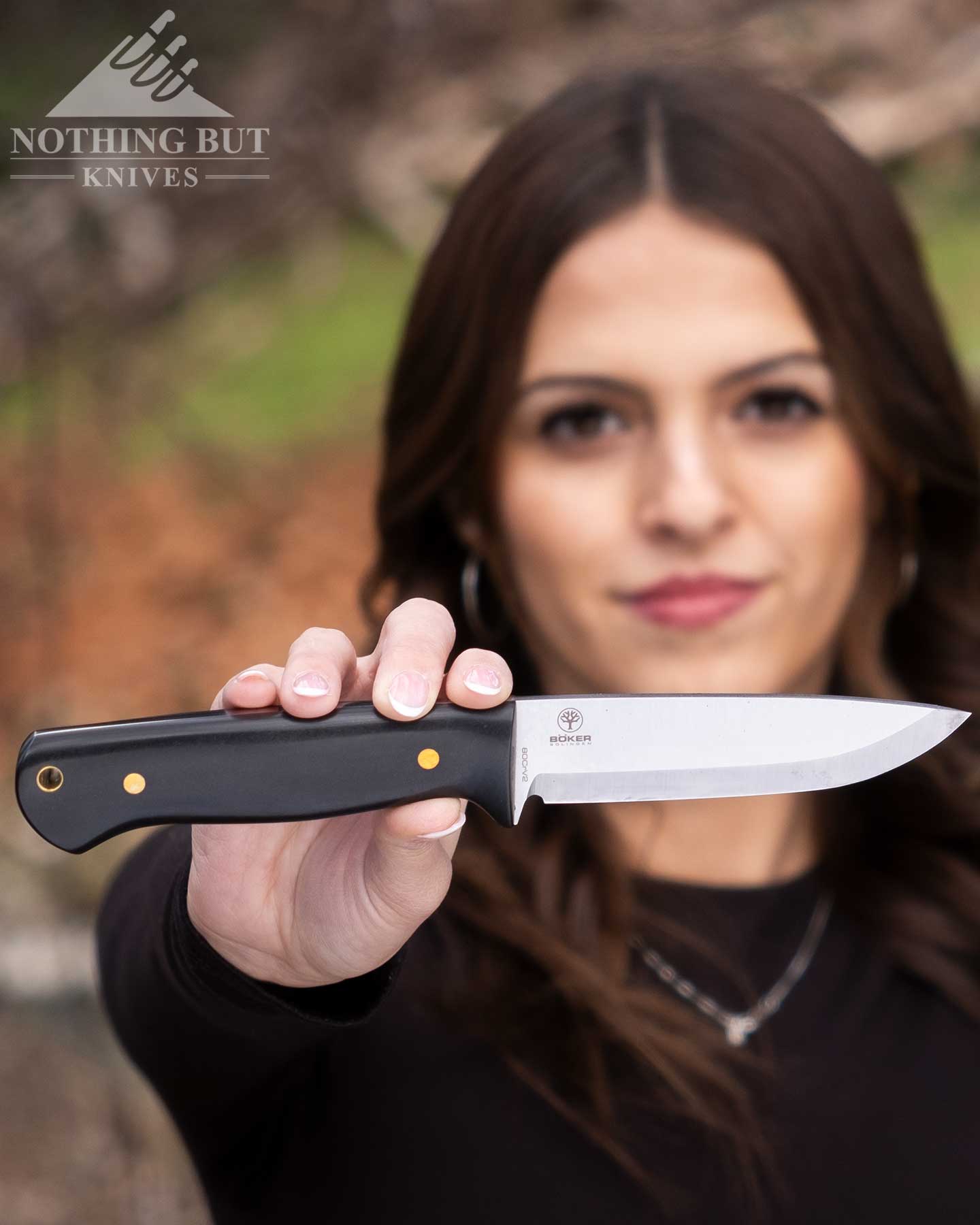
When the Bushfriend 2000 first released there were two versions; A scandi grind and a flat grind.
We reviewed the scandi grind, because that’s our preferred blade style for most things (especially outdoors, but indoors too, more often than not). Now as I’m writing this review and trying to find listings for price comparisons I notice that the scandi-grind version doesn’t seem to exist anywhere.
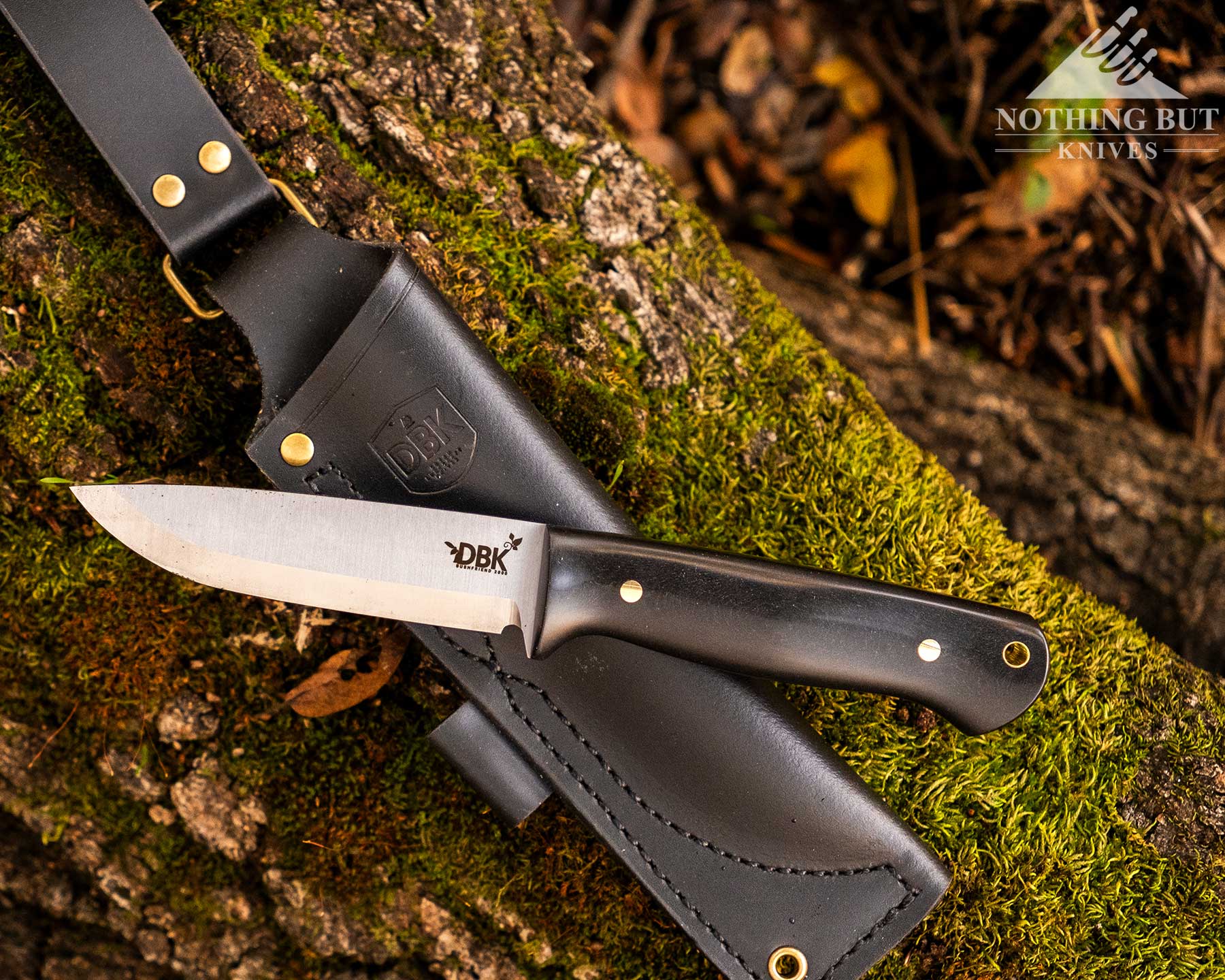
Word is they’ll have more scandi blades out sometime after summer of 2025, and Maarten from DBK even mentioned to us there would some adjustments in the next batch like a slightly thicker handle (I’m all for that), and a sheath with the stitching modified to make it a little more robust.
All that to say we reviewed an early model of a knife that might keep seeing little changes like this in the near to far future. I just want to get ahead of the bored future reader scanning this article in his brain computer and wondering why I keep talking a blade with a scandi grind and 80CrV2 steel when everyone knows, in the year 2038 that the Bushfriend has a quartz-based laser blade with a saber grind.
We will announce any upcoming releases or model upgrades in the News section of our site.
Good Use of Steel with a Great Edge
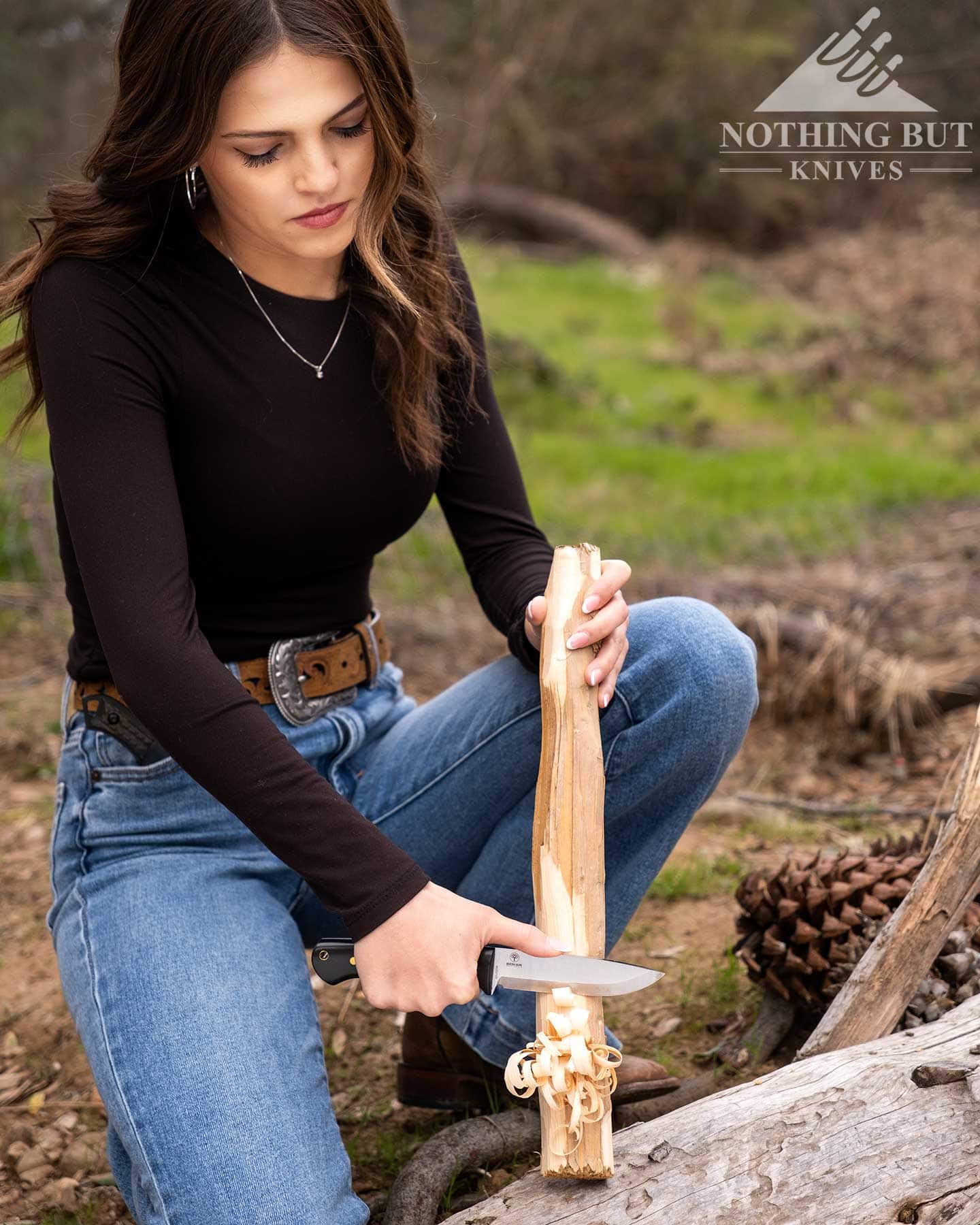
On the note of that thick blade with old high carbon steel, this blade is just about everything I was hoping it would be:
- The Bushfriend 2000 wants to get hit and eat wood,
- It holds its edge like a champ,
- It doesn’t chip anywhere near as easily as it should,
- And for all that slicing ability, it has a thick spine that can get work done.
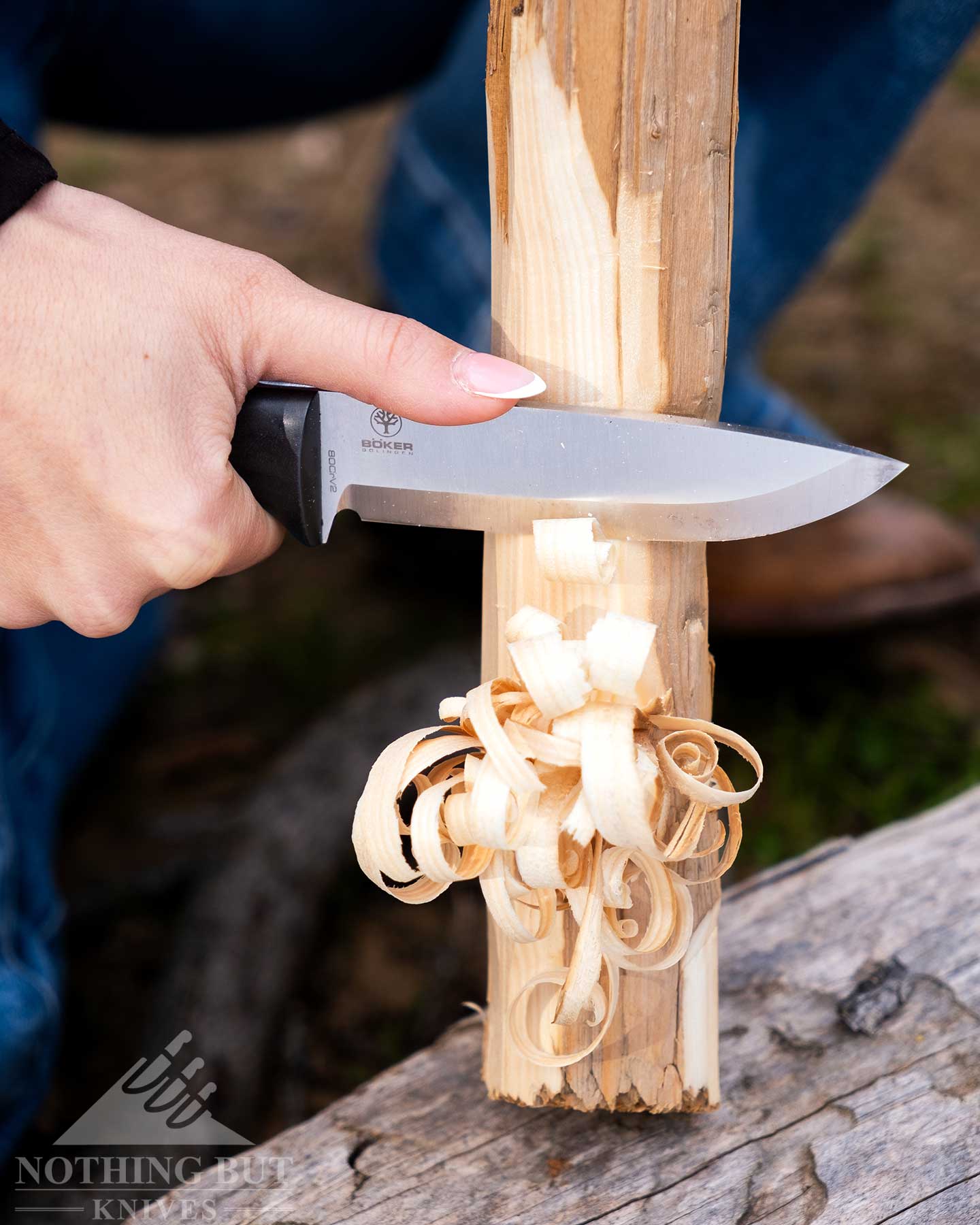
It comes out of the box popping hair, and it has (almost) no problem carving, chopping, and batoning wood. This is a slicey knife with a thick spine, which is a good recipe for a lot of outdoor tasks.
One nuanced trade off here is that true scandi grinds can sometimes bite too hard to be ideal for feather sticking. This knife does have that problem a little bit, but it doesn’t take much effort to adjust for that.
It’s the kind of thing that can be improved with a microbevel, but then the edge loses some of that harshness, which, besides being helpful for cutting regular stuff like rope and cloth, turns out to be one of the few edge geometries that make feather sticks out of oak with any kind of consistency (more on that particular bane to my existence later). So I’m more than happy with the trade offs in this geometry.
It has excellent edge retention. 80CrV2 can go a lot of ways as a low-alloy, high-carbon steel, but Boker knows what they’re doing, and they apparently wanted this to be a hard knife. I was still making smooth cuts through paper with it after two days of outdoor testing without cleaning the edge up. It took being batoned through several pieces of wood grown in the shadow of Mordor before something like making feather sticks starting feeling more difficult.

Obviously, the grind makes it prone to chipping (another thing that could be solved with a microbevel, but, again, I’m happy with the trade offs here). There’s only so much you can do with a true scandi grind to prevent that. That’s just something you have to learn to deal with as a user. But the little bit of chipping I’ve experienced on it is well within an acceptable range for a true scandi on a blade that holds its edge this well.
I didn’t see exactly what chipped the edge for me, but I suspect it happed while trying to clean a branch too low to the bank of a rocky creak.
Probably Batons Really Well
I batoned like crazy with this, but if you saw the state I was in afterward, you might draw the wrong conclusion that the knife doesn’t do so well.
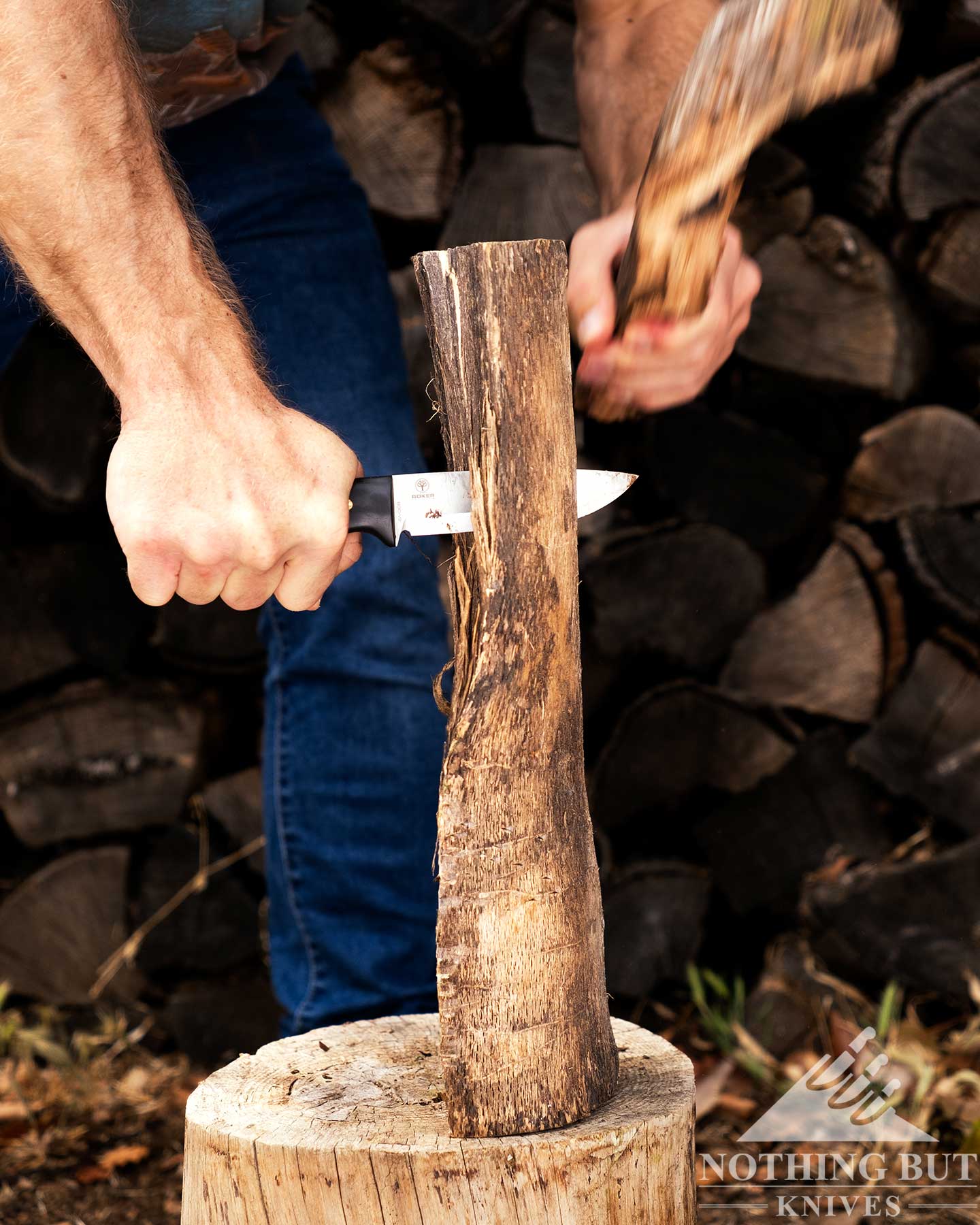
That’s an issue of location. Certain kinds of wood are easier to find around my parts at certain times of year. Around the time I was testing the Bushfriend 2000, pretty much the only thing I could find was a million pieces of knotty, American oak, or what some might refer to as God %&#! #@%$&%-ing wood.
At least, they do if they’re trying to baton or do any kind of woodcraft with it.
Despite the curves, knots, and density, I managed to split a good pile of logs with the Bushfriend that would have lasted me a few hours of fire into the night (if I had been inclined to build a fire in 90 degree weather). It wasn’t easy, but I wouldn’t have even attempted if this knife weren’t what it is:
A purebred bushcraft knife.
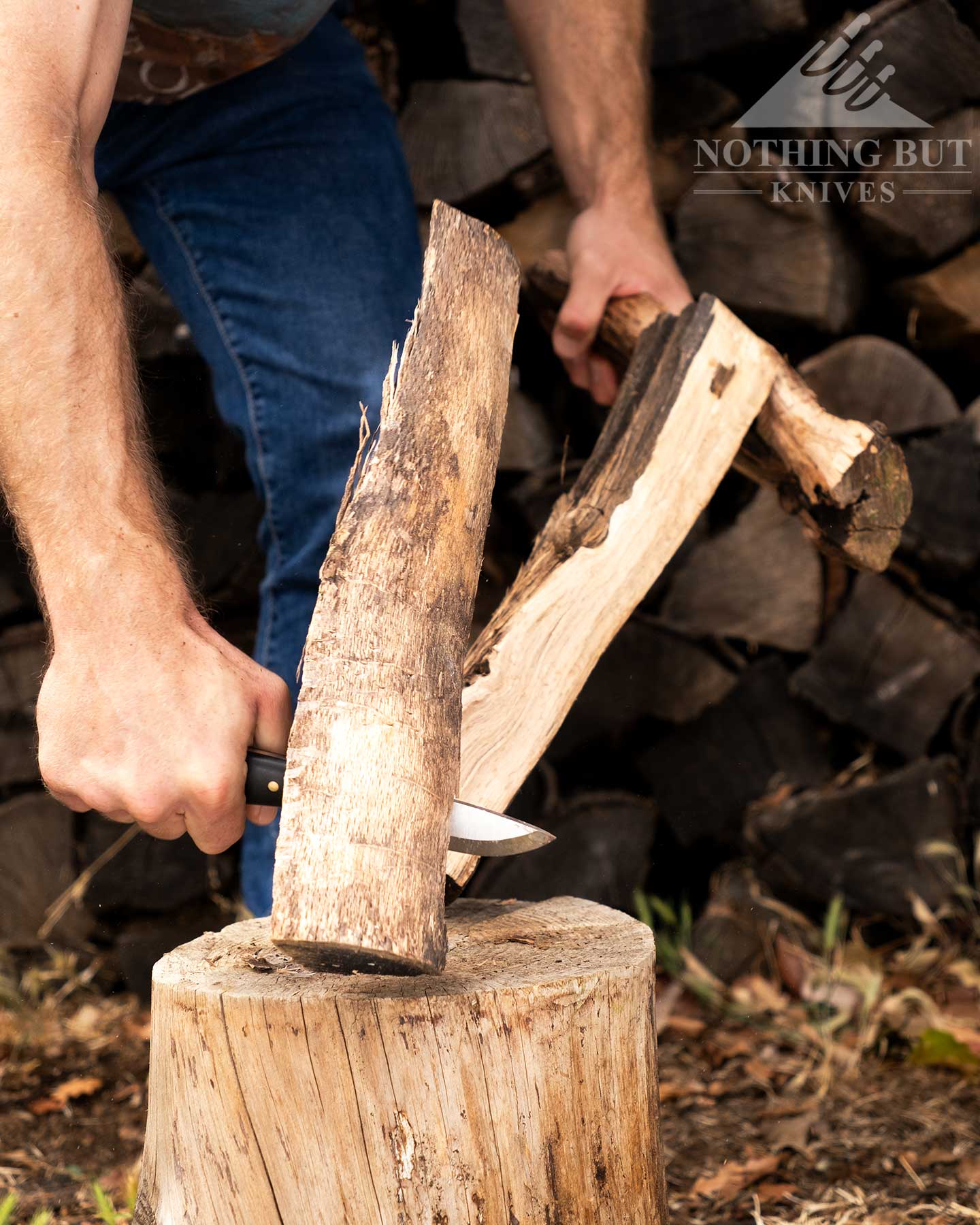
I’m sure if I applied this to wood that was more forgiving than the tree equivalent of a honey badger it would split a log with a couple strikes (in fact, some of the logs I worked on did start splitting after a couple strikes; it’s just that American oak doesn’t care when it starts splitting. It keeps hanging on like it’s a boa constrictor and the knife is a baby ocelot).
But what’s really helpful is that this knife is the size where it needs to be. I was able to keep a strong grip on the handle, and the blade stock is thick all the way up to the tip so it’s easy to strike, and it always feels like it makes progress when I do.
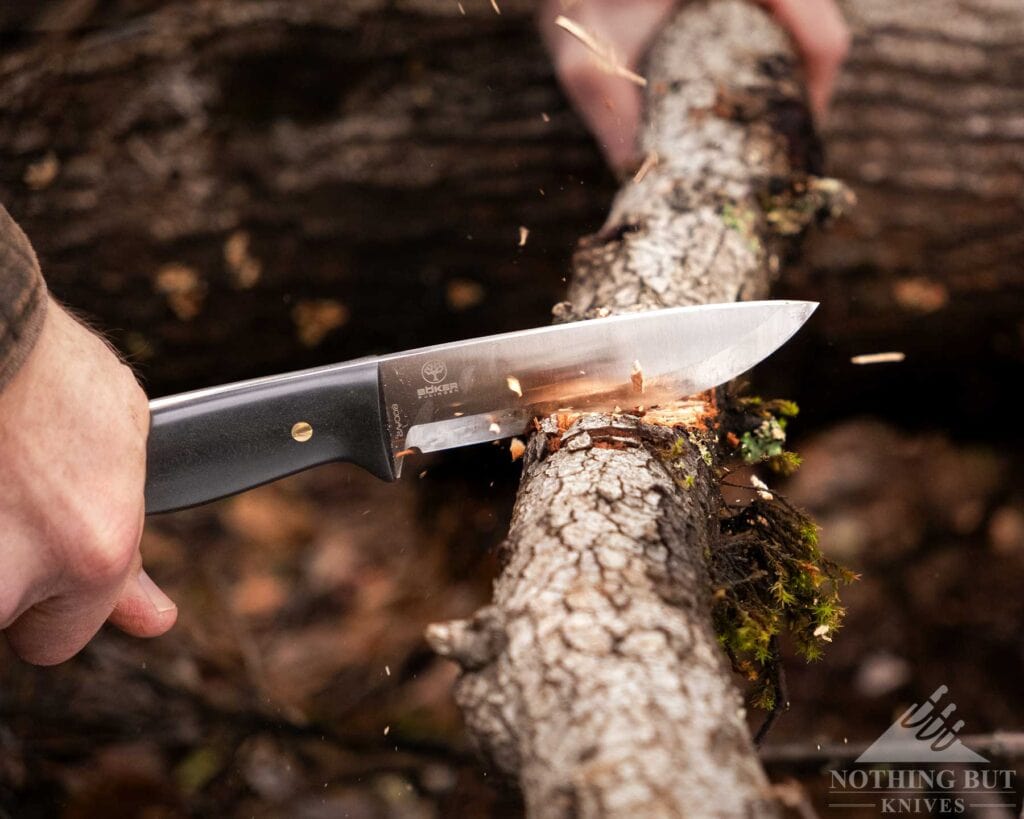
Which is all to say that, even when you’re trying to do something difficult like chop through wood that feels like it was grown by the Erinyes to take vengeance on anyone who vowed “I’ll definitely remember to bring an axe this time”, the Bushfriend has the materials and the design that gives you the option to work through it and problem solve.
Raining FIre
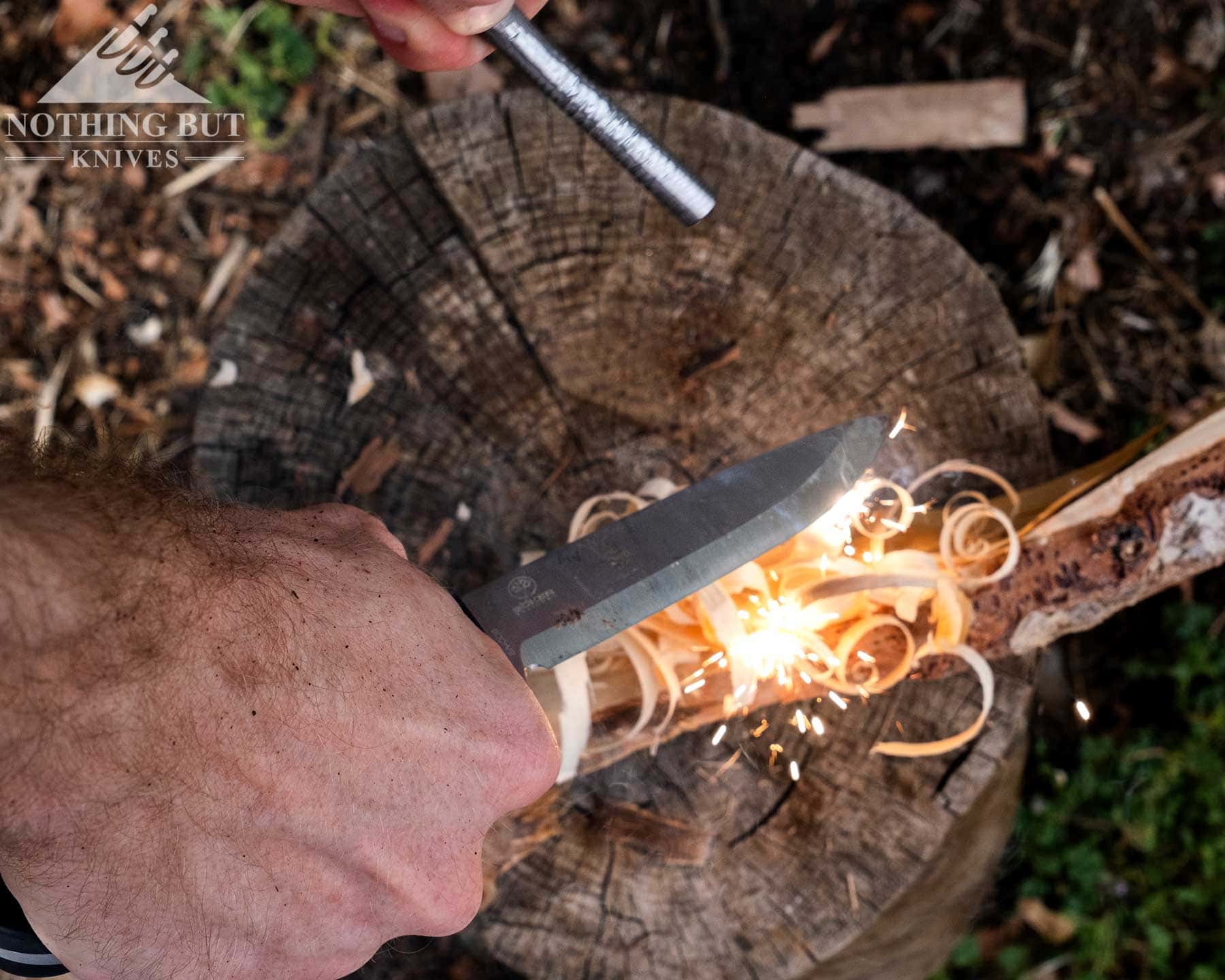
The one thing I was absolutely certain of was that this knife would throw spark like a champ. That spine has a crisp 90 degree edge almost all the way to the tip, and there’s no coating to get in the way. It throws spark like magic.
I didn’t really even test this aspect of the knife so much as play with it. It took me two sweeps to get it warmed up, and then almost every motion I made where steel met ferrocerium made bright, strong sparks.

I should mention that we did this test in the foothills of the Sierra Nevada Mountains in Northern California after summer heat had been turning up for a couple weeks. Warm thoughts will start a fire here for most of the year. But the kind of control and consistency I can get with this knife is on another lever from most survival and bushcraft knives I’ve tested.
Handle & Ergonomics
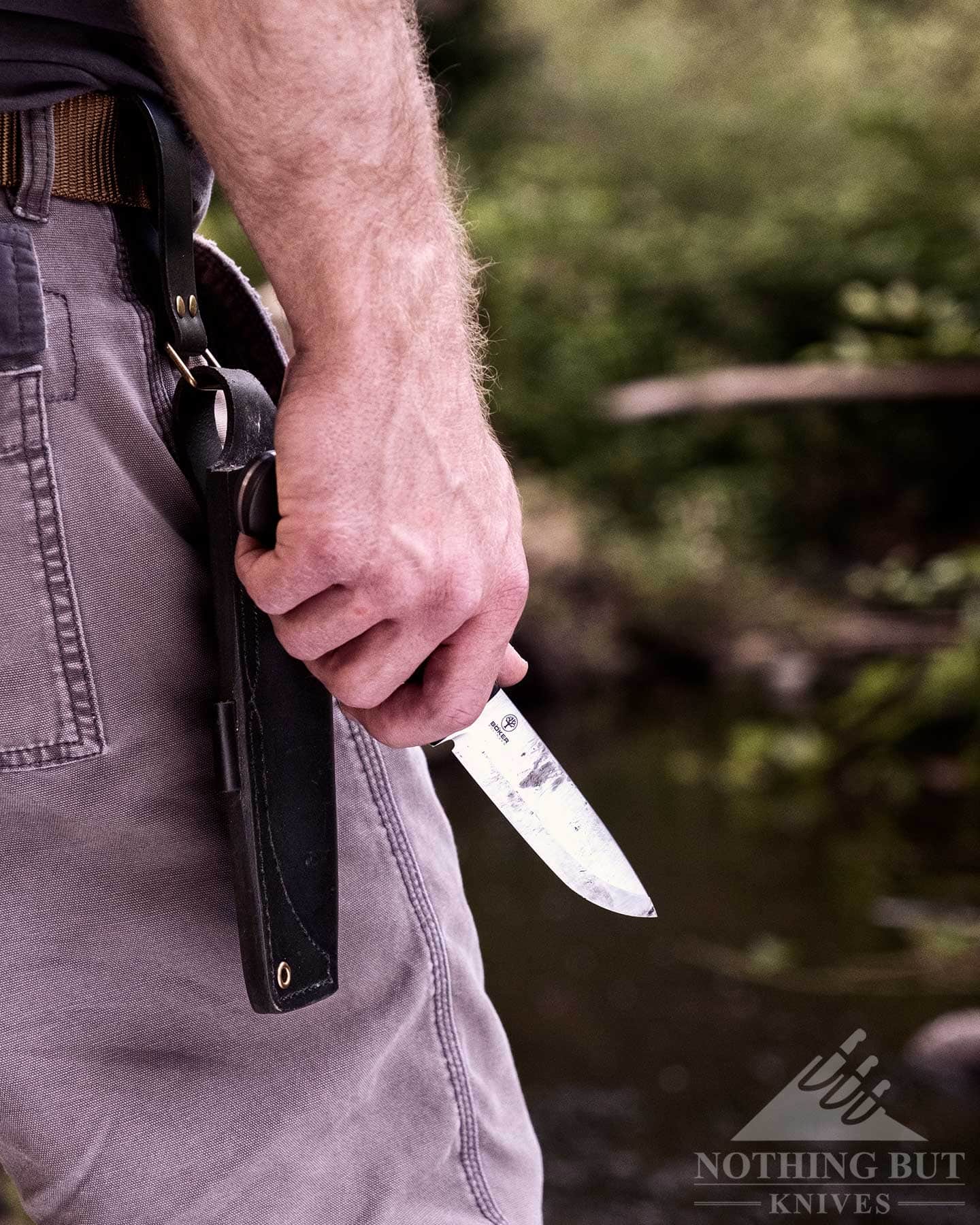
Well I like this handle a lot:
- It has plenty of curvature and room to grip and shift,
- Feels solid when I need to grip hard on it,
- It fits my hand well (although I think I know what Mikkie meant when he mentioned it being just a hair too thin),
- And Richlite is just a good material for a bushcraft knife all around (although I’d like it to be more textured).
The balance is somewhere around my index finger, which is about where I want it when I’m carving, but most important it just feels right whenever I adjust or tighten my grip. The shape hits at the right spot of helpful neutrality where I can hold the knife so many different ways and there’s always something in the shape that makes my grip feel good.
But It’s Too Smooth for Me
They really polished these scales. That’s great for chopping because it creates less friction in the hand but it can also translate to slipperiness in cold conditions, which is why it’s never been my preference.
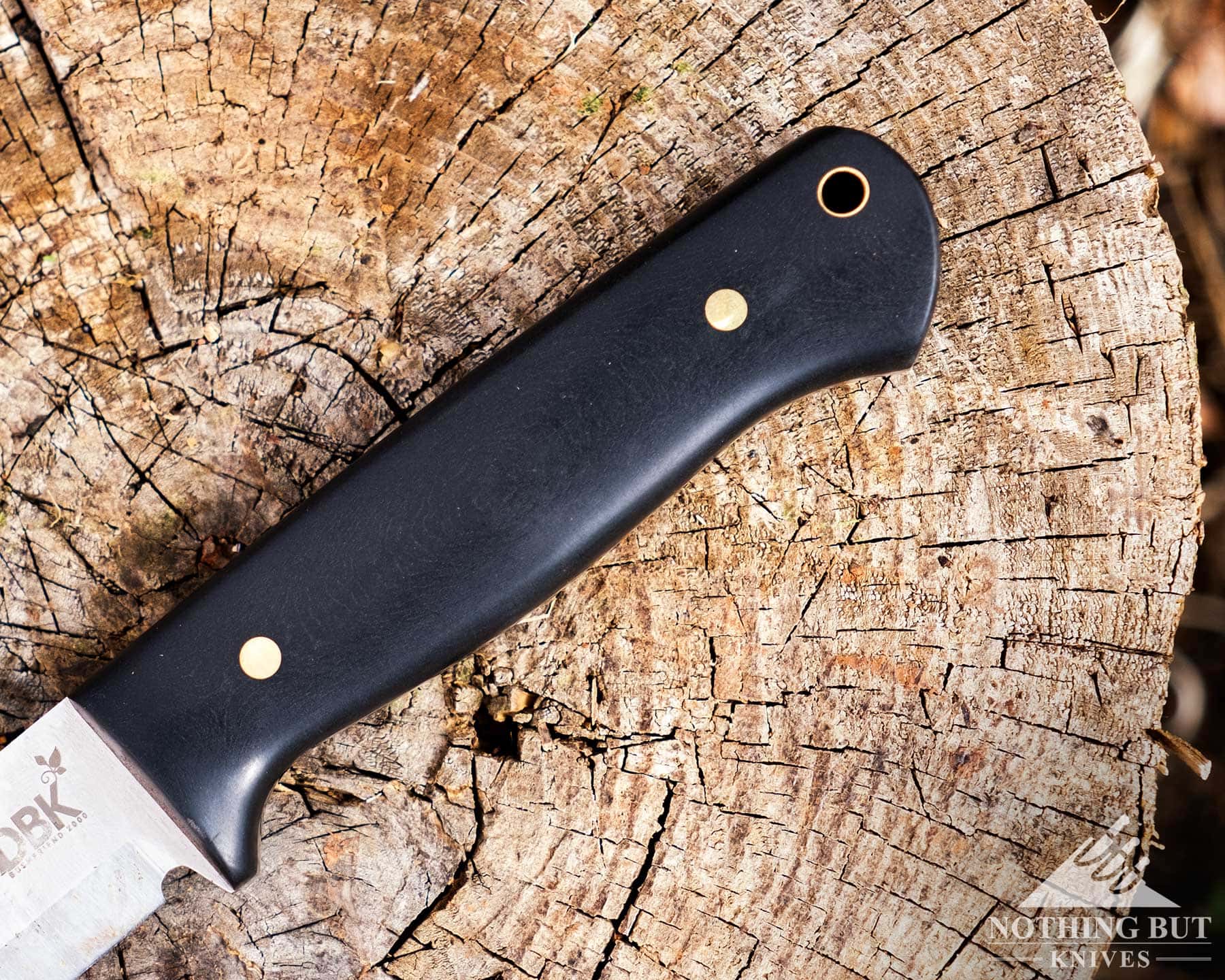
The scales on this are Richlite, which is basically a paper-based resin material. It’s fantastic stuff that feels similar to Micarta. In warmer weather especially it has an almost tacky feeling that kind of sticks to the hand in a helpful way.
It’s the same stuff used in The Schwarz Knives Lost Trail 5, which has a sort of powdered texture that stayed grippy even in wet conditions. I was hoping the Bushfriend would have some echo of that texture, but I think they were aiming for a feeling closer to a Bark River knife, which I can’t fault them for.
But I also wouldn’t mind some jimping. The lack isn’t killing this knife, but it’s something I keep coming across in knives with a completely smooth spine. My thumb instinctively searches out those ridges, and I feel somehow like I’m driving without a seatbelt when I don’t feel that.
The handle shape provides enough control that I don’t think the jimping is totally necessary. But, you know, how much better if it was there?
Comparison and Alternatives
We’re talking bushcraft, which means we have to talk Morakniv.
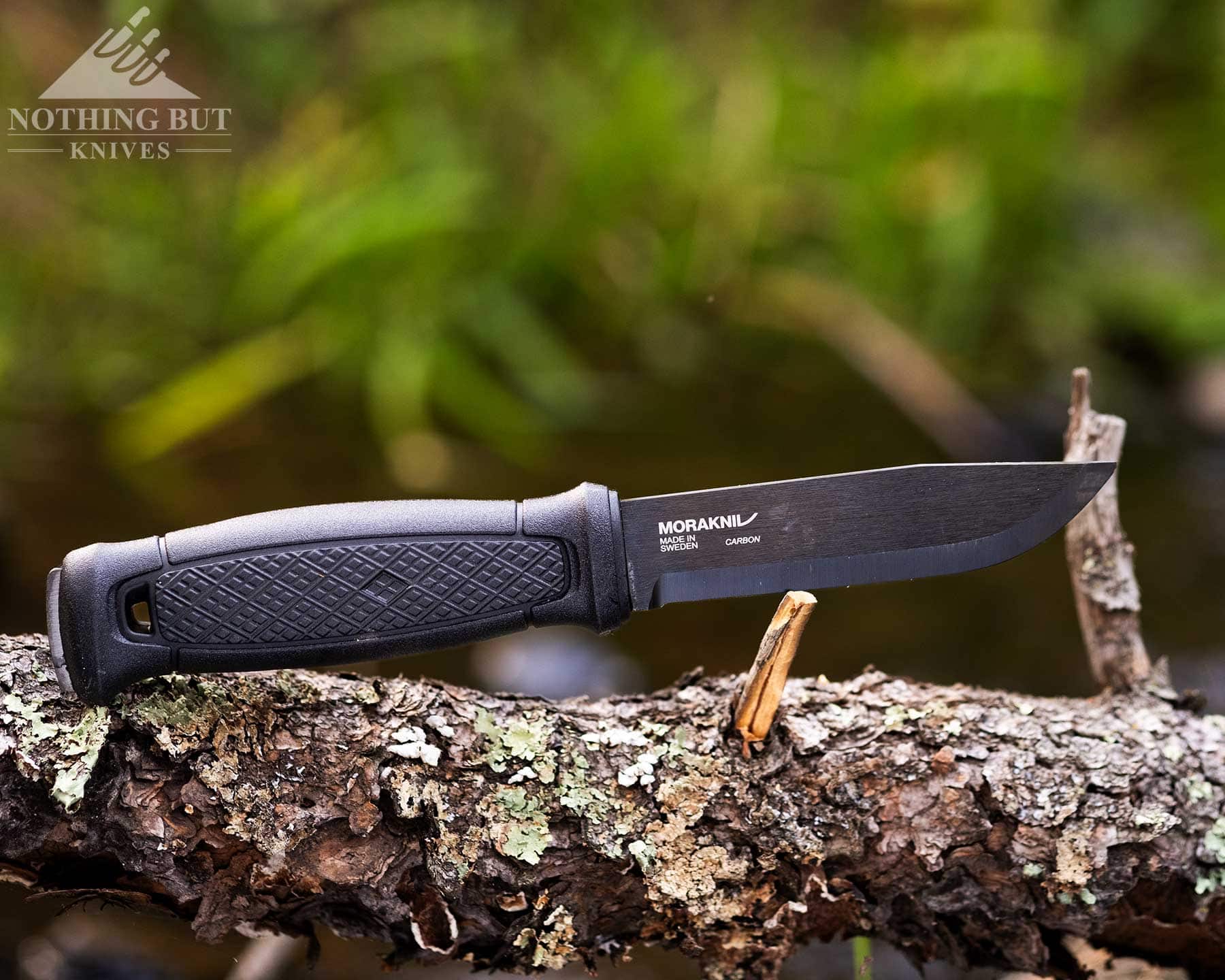
Even DBK brought out the Mora Garberg specifically to test beside the Busfriend 2000. Their own conclusions (and I agree) were that the Mora was more comfortable but had worse edge retention. The Garberg also runs a little cheaper ($135 vs around $100, as of this writing), which might be enough to be a factor.
The Boker Bronco has a similar profile and use case (although it leans more survival than bushcraft), but offers a different part of the handle ergos spectrum with a thinner handle that has a rubber covering. The standard-size version of the Bronco hits the $200 mark, though, and even considering that it’s sort of a cheaper alternative to the Falkniven F1, it would be hard to justify going up to that price considering how well the Bushfriend performs.
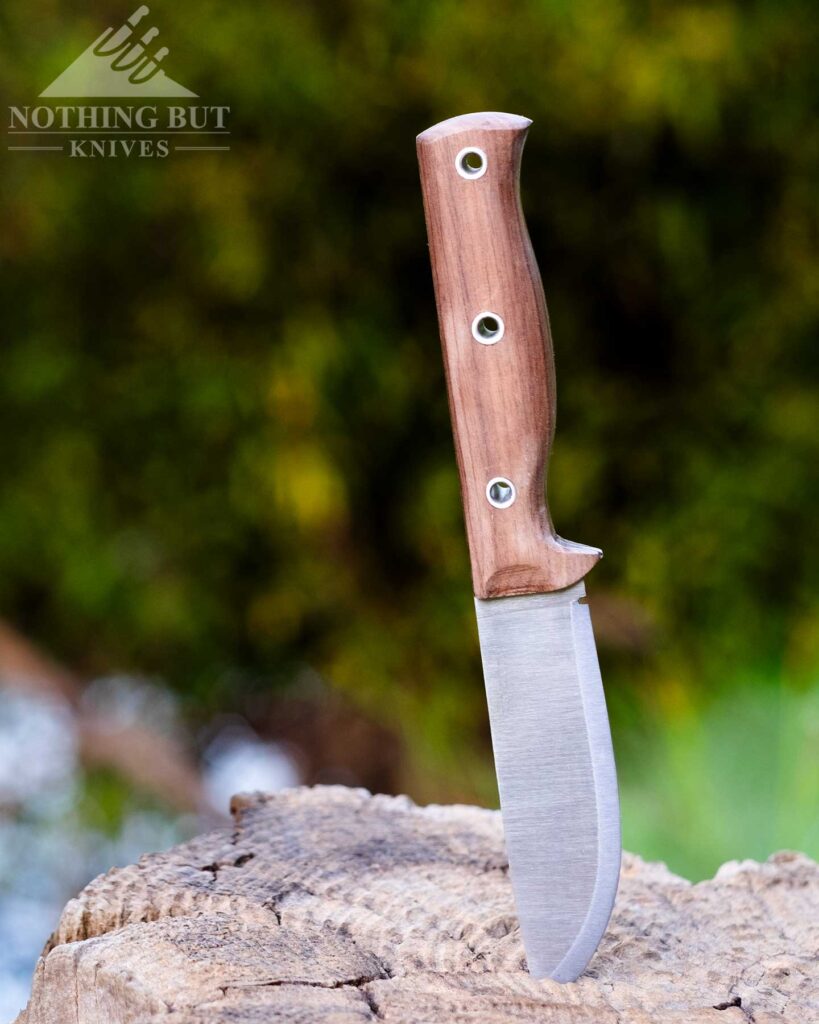
The Condor Swamp Romper is a good alternative if you prefer wooden handles, although that one has a habit of turning in the hand. The Swamp Romper has the typical high-carbon tradeoff: soft edge retention but a hell of a lot toughness. The price is the real perk, though. It usually runs around $60 these days, which is pretty good value for how well it holds up.
But what might be the most interesting comparison is almost any Ka-Bar Becker knife. Put up, say, the BK2 (or the BK 18, if you want to stay closer in size), and essentially what you have is a knife that costs about the same, has a similar smooth-handle feel (although I definitely prefer the Richlite on the Bushfriend), isn’t as dialed in for processing wood, but is exceptionally good at taking abuse, and arguably comes with a more versatile sheath. Honestly, I don’t know which I would pick if I could only pick one. That’s why I have all of them.
A Smooth Buddy for Your Next Camping Trip
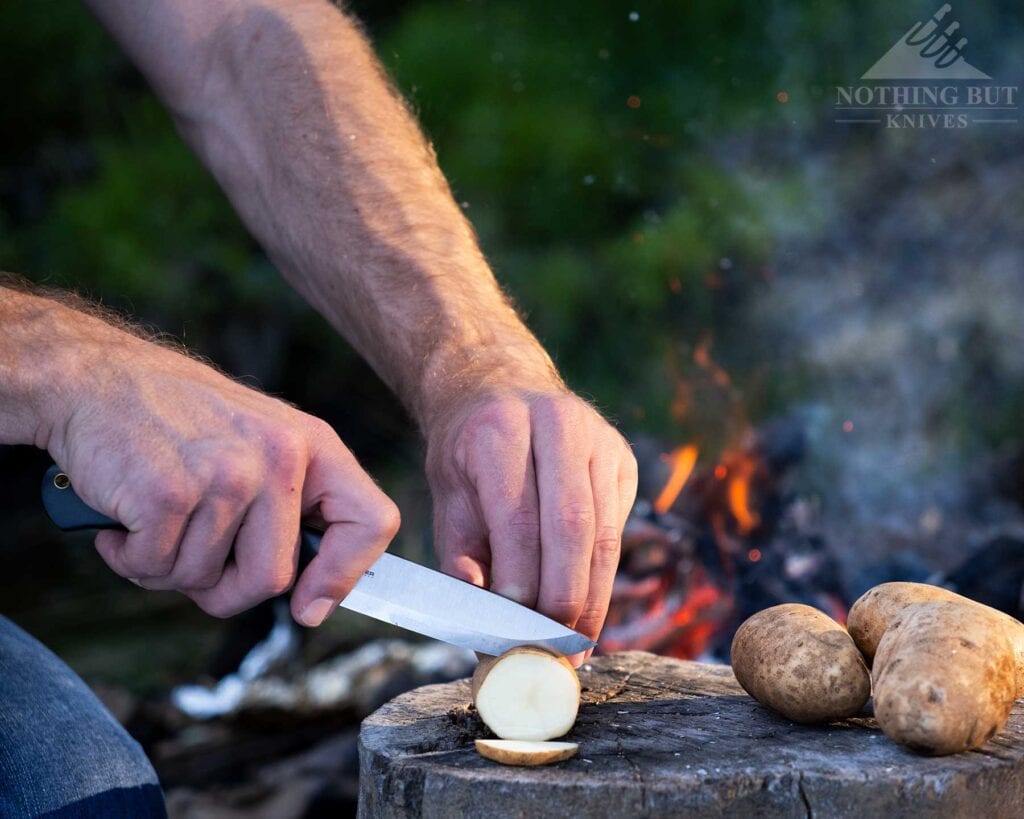
DBK set out to make a good budget bushcraft knife, and they nailed the bushcraft part. The Bushfriend 2000 is a beast with wood, and it makes fireworks with a ferro rod. It has a great handle that plays nicely with the hand in any position (even if it is a little too smooth for me), and functions fantastically as an all-around camping knife.
The budget part is more debatable, not because they didn’t get it to a good price point for what it is, but because in the greater context of fixed blade survival and bushcraft knives there is no end to sub-$100 options that are serviceable.
If someone asked me for a budget bushcraft recommendation, this wouldn’t be the first knife to come to mind. But besides just liking the knife as well made tool there are at least two conditions I would likely recommend it for:
- If you like Bark River, ESEE, or Falkniven but feel like most of their knives are too steep;
- Or if you’re like me and are cursed with an overabundance of oak at your regular camping spots.
